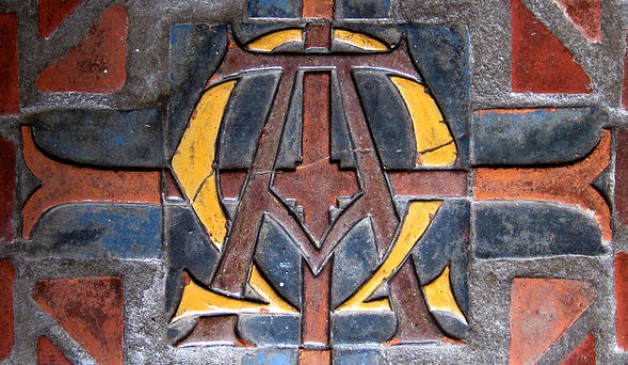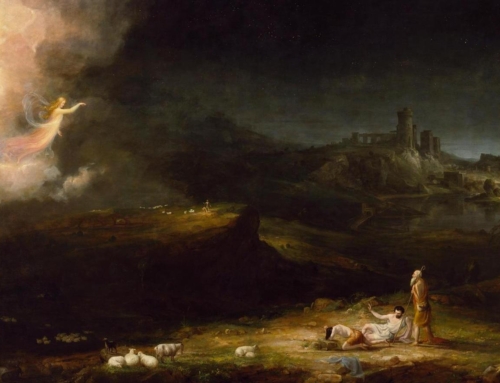The first questions we need to ask about the Book of Revelation are the most basic: Who, what, where, and when is this about? Is it about the early Church under the Roman Empire? The Church right now? The Church at the end of the world?
Fortunately, these all have the same easy answer: “Yes.” Remember what Jesus’ interpretation of Daniel taught us about multiple true fulfillments of apocalyptic visions throughout history.
Next, we need ask, “Why?” What is the purpose of the book? It is to strengthen the faith of Christians to endure the time of trial until our Lord returns. We can see this from internal evidence in the text and from comparison with similar apocalyptic passages in Scripture and non-canonical works of the same genre.
From the text, just look at the seven letters in chapter 2 and chapter 3. From comparison with other writings in Scripture, we can see that the most similar book in the Old Testament is Daniel, another apocalyptic book, the purpose of which is strengthening God’s people to endure persecution. There are apocalyptic elements in many other Old Testament Prophets, too, notably Ezekiel, who lived during the Babylonian Exile. Finally, outside of the canon of Scripture there are many apocryphal “Apocalypse” books. Unlike the apocalyptic literature in the Bible, these works were not produced under the inspiration of the Holy Spirit, but they are similar in style and content. They tended to be produced during persecutions to encourage the people of God to stand fast. The common thread of persecution in these three sources suggests that the point of the Book of Revelation is to show each of us in the Church on earth how to take up our Cross and follow him.
The last fundamental question to ask is, “How?” How will these things come about? The answer is: “By the providential ordering of God.” The fact that God guides all things to their end might not be apparent in the world when his enemies seem to have the ascendancy. But the Book of Revelation draws back the veil to reveal by prophecy not only the future but also the invisible realities of God’s providence in history and the present, before they are made manifest at the Last Judgment.
The basic structure of the Book of Revelation is threefold:
1. God’s people suffer for a time at the hands of God’s enemies
2. God comes and gives judgment
3. God’s people share in His triumph
A slightly more specific outline that attends to the images of the book would be:
1. Prologue and Letters to 7 Churches
2. God and the Lamb in Heaven
3. 7 Angels with Trumpets
4. The Woman vs. the Dragon
5. 7 Plagues
6. Condemnation of the Harlot
7. The New Jerusalem, the Bride of the Lamb
To many people Revelation seems like nothing but bad, scary stuff, and there certainly is a lot of that. But if that’s all we see, or the main thing, we have missed the goal of the book that appears at the end (#3 on the first outline, #7 on the second). Revelation’s telos and consummation is the New Jerusalem, the everlasting joy and triumph that the elect enjoy in God when everything has been accomplished. When reading the book, we should always keep in mind the One Who is the beginning and the end of the book and all throughout: Jesus. The devil and the wicked are important cast members, but they are not the Alpha and the Omega—that’s Jesus.
Regarding the manner in which we will interpret the book, we have seen evidence from all over the Scriptures that the author of Revelation intends us to exercise prophetic interpretation in the same manner as Joseph and Daniel and the other prophets. The Book of Revelation itself also confirms our interpretative strategy with internal evidence. In chapter 17 an angel comes and gives St. John interpretations of exactly the sort we have come to expect:
The angel said to me… Here is a clue for one who has wisdom. The [beast’s] seven heads represent seven hills upon which the woman sits. They also represent seven kings.
The beast… is an eighth king. The ten horns that you saw represent ten kings.
The waters that you saw where the harlot lives represent large numbers of peoples, nations, and tongues.
The woman whom you saw represents the great city that has sovereignty over the kings of the earth.”
—from Revelation 17
Without further ado, let’s get started reading the Book of Revelation. Here is a link to Revelation chapter 1. I suggest you have a Bible at hand to follow along or read the text on the computer since it is too much text to reproduce conveniently here.
As the book begins, we see a priest (just like Ezekiel, but belonging to the New Covenant) in exile (just like Ezekiel), whose account begins with a heavenly vision (just like Ezekiel). This suggests that we should be thinking of the vision of Ezekiel, in which he saw God. John sees Jesus, the “Son of Man,” occupying that place, and his appearance should also remind us of the “Son of Man” and “Ancient of Days” from the vision in Daniel 7.
St. John’s account teems with parallels to Ezekiel and Daniel in order to give his readers cues to understand his vision. He is neither seeking to copy their books nor to create something wholly new; not novelty but continuity with the tradition of divine revelation is what authenticates his experience. By emphasizing details that are similar to those prophets, St. John tells us that he saw what they saw and that understanding their books will help us understand his.
Image: Moravian Tile Works, Alpha and Omega







